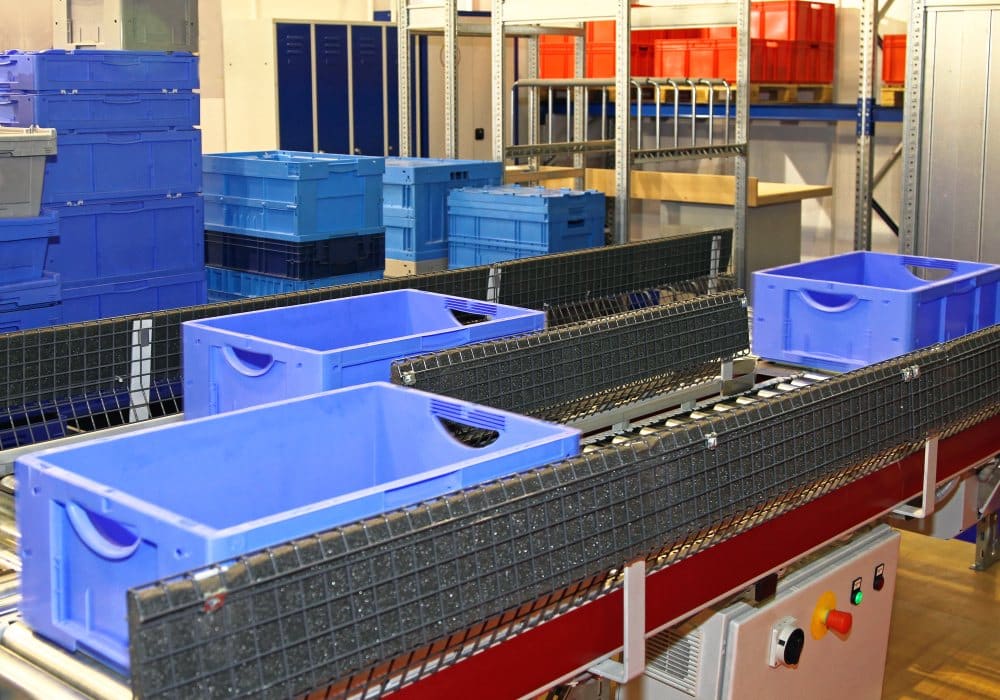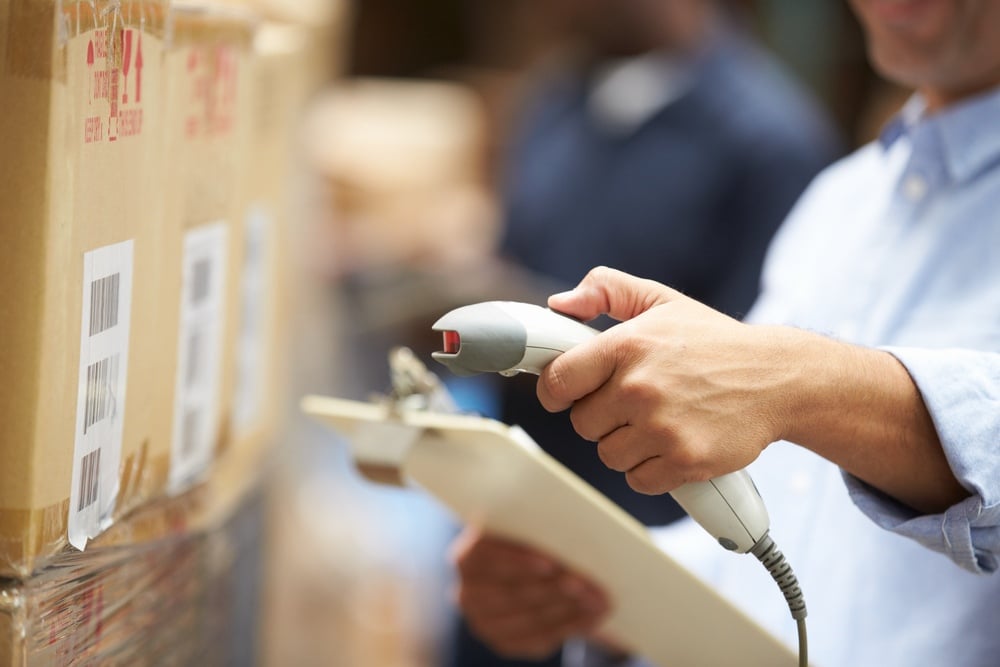Reverse logistics is an important part of modern product sales, but what is a reverse supply chain, and how does all of this work? Here’s everything you should know to understand reverse logistics.
What Is Reverse Logistics?
Reverse logistics is a specific form of supply chain management that moves physical products from consumers back to a seller or manufacturer. This is most commonly necessary for returns, repair, or recycling of the product, after which a company can attempt to extract value from it again.
For an example of how this works in practice, let’s say that a customer buys a stationary exercise bike. Unfortunately, when the customer receives it, one of the parts doesn’t fit, and it’s impossible to assemble the bike.
Most people’s first instinct is to try and get a replacement part, as that’s faster and cheaper than sending out a new bike. However, the manufacturer might have difficulty providing replacements due to production and supply limits. Rather than trashing the entire bike, it makes more sense to ship it back and let the manufacturer replace the problematic parts later.
The benefits of reverse logistics for companies (which we’ll talk more about) include an efficient flow of goods, reduced costs, and lower risk for companies. It’s more complicated than just reversing a payment, but ultimately the benefits outweigh the costs.
In some cases, refunds (and therefore some form of reverse logistics) is also a legal requirement. That’s not as universal as you might expect from the prevalence of return policies, but it’s some added emphasis for why companies should set this up.
What Are the Different Types of Reverse Logistics?

Companies may need to work with several types of reverse logistics. However, not every company needs to use all of the strategies we have listed below:
- Returns management: Returns management covers returns from customers. Done well, it can help improve customer loyalty and improve the brand because customers always like it when businesses try to help solve problems.
- Return policies: Return policies clearly state how and when a product’s recipient (usually a store or customer) can return products. Keeping these clear and accessible makes it easier to follow them.
- Delivery failure: Delivery failure occurs when a product can’t arrive at a destination. While some ship back to the manufacturer, it’s sometimes possible to intercept this return and try resending it.
- End-of-life: End-of-life recycling is especially common with auto batteries and other dangerous products. This lets manufacturers reclaim any valuable components while properly managing the disposal of the rest.
- Packaging management: Proper packaging management can make it much easier to return products while minimizing waste. For example, corrugated plastic boxes can handle multiple shipments, which is good in cases where cardboard wouldn’t work.
- Rental equipment: This is one of the most popular types of reverse logistics. Giving products to customers temporarily, then taking them back after the job is done, is an entire business model in some industries.
- Repairs: Many complex products need occasional repairs to keep functioning. This is especially popular with computers, but even other products can occasionally benefit from the help.
- Unsold products: Unsold products can occur for many reasons. Returning them to the manufacturer or another distribution center can let a company move the products to areas they’re more likely to sell.
Why Reverse Logistics Is Important to Businesses and How it Creates Value for Companies
The main reason reverse logistics is important is because it adds value to the business. It has a wide range of other benefits, from improving customer loyalty to protecting the environment, but its direct benefits to the bottom line are the main thing most companies care about.
For most industries, returns are inevitable. Maybe customers only want to use a product once and send it back to avoid paying, or maybe there’s a real problem with it. Regardless of the cause, most stores have a money-back guarantee that allows customers to return the products, and businesses have to honor that.
This isn’t even getting into the business-to-business side of things, like retail stores returning unsold products at the end of holiday seasons.
The primary thing to understand is that returns are inevitable for many businesses, so the types of reverse logistics above aren’t optional so much as must-have elements of a business strategy. Without a reverse supply chain, companies can lose a lot of money.
Reverse Logistics in Practice
Imagine this scenario: A major department store orders too many air conditioners for their customers, and most sit there in a warehouse, taking up space. The company only has so much room in the warehouse, so several dozen pallets full of ACs sitting there long-term is a serious problem for them.
Unfortunately, the manufacturer doesn’t have a reverse logistics process and refuses to allow a shipment back. Now the store has to figure out ways to offload the products, possibly by selling them to another company. If the manufacturer accepted the returns instead, they could build brand loyalty by selling them to someone else with a nice discount.
In the meantime, the store probably isn’t going to buy from that manufacturer again unless they have to. The company has lost a significant number of future sales by pursuing short-term value and trying to avoid losing existing sales. Having a reverse supply chain is ultimately more profitable for them.
Metrics
Reverse logistics have several main metrics that help track their importance. These include:
- Product condition: Product condition covers things like whether returns are in a resalable condition. Realistically, companies can expect some variance in product condition.
- Supply chain errors: Supply chain errors include things like defective materials or refused deliveries. Keeping track of these can help a company locate the source of problems and find ways to resolve them.
- Volume of returns: Tracking the number of returns and resales can help companies figure out if there’s a new problem with their products.
Reselling
One of the most popular ways to get rid of returned goods is through a reselling company. These companies buy returned products in higher volumes, then sell them with moderate discounts. This works because many returned products are in perfect condition and are shelf-ready for customers.
One of the most important things to remember about reverse logistics is that a return does not necessarily indicate a problem with the product. Sometimes people change their minds, or perhaps they’re tight on funds and decide they want their money back.
In cases like these, they often return the items in excellent condition, allowing for resales. This isn’t as effective for smaller businesses, but companies big enough to have a lot of returns can benefit from partnering with a reseller. Notably, this can be a near-guaranteed way to extract value from returned products.
The Benefits of Reverse Logistics
Having a reverse supply chain offers many benefits for companies. Some of the benefits of reverse logistics include:
- Brand sentiment: One of the primary benefits of reverse logistics is a better opinion of the company brand. Companies that are known for having robust and reliable return policies appear safer to customers, encouraging them to buy. There’s a reason almost all online stores allow returns for most products.
- Customer retention: Customers who replace products are more likely to be happy than those who refund the products. A great replacement process can address their unhappiness with product failures and even encourage them to keep buying from a company in the future.
- Faster service: A well-run reverse logistics chain can help companies provide faster and better customer service, including shipping out replacements faster or minimizing downtime during repairs.
- Lower costs: Recycling and refurbishing products, especially those that are mostly in excellent condition, can noticeably reduce costs for companies.
- Sustainability improvements: Many companies are moving towards more-sustainable business structures, which include recycling products more effectively. Some customers look for companies doing this, so that’s another area where advertising the company’s reverse logistics can directly improve sales.
The Challenges of Reverse Logistics
While reverse logistics are popular (and, to some degree, mandatory), there are some challenges that companies need to keep in mind.
First, they need infrastructure. That means software for tracking the returns and people handling the boxes. Companies must devote a certain amount of work hours to addressing returned items. Beyond that, businesses must ensure they comply with relevant laws, including the laws of the customer’s home area.
However, seasonal volume can be an issue. Holiday seasons often have more returns simply because more people are buying things, and without careful management, returns could overwhelm warehouses.
None of these are very difficult to address, but it is something businesses need to keep in mind. The need to devote work hours to handling returns is particularly important, although some companies can contract this out.
Make Reverse Logistics Easier for Your Company

Reverse logistics are fundamental and necessary for many modern businesses. Their benefits significantly outweigh their drawbacks, which is true before we get into legal obligations. Companies that sell physical products have every reason to set up a proper reverse logistics chain and keep it functioning smoothly.
If you’re looking for ways to improve your packaging and make reverse logistics easier, consider contacting MDI today to speak with one of our team members.